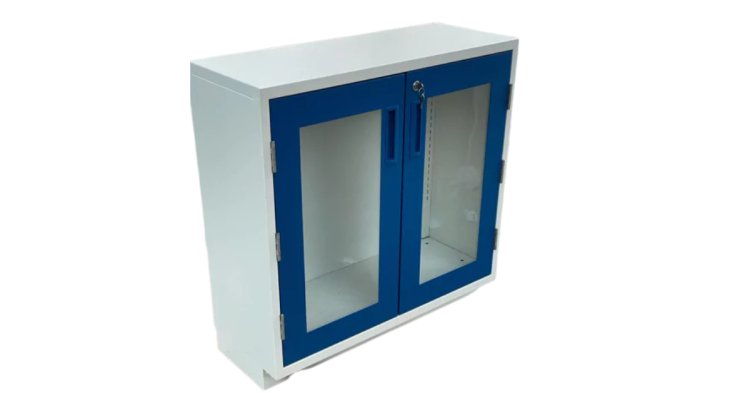How to Select the Best Chemical Storage Cabinets for Your Lab

One of the most significant aspects of operating a lab is chemical storage in its proper and safe manner. Chemical storage cabinets are one of the most significant elements in chemical storage of hazardous chemicals and accident prevention. Appropriate laboratory chemical storage cabinets should be chosen to have a secure and effective working area. In this guide, we will lead you through the most significant elements in choosing the best chemical storage cabinets for your lab.
Why Laboratory Chemical Storage Cabinets Are Important
Laboratory chemical storage cabinets are made to securely and in a proper manner store chemicals. The cabinets are produced such that standards of safety protecting employees from hazardous chemicals and chances of accidents, for instance, fire or spilling, are kept intact. Storage also helps keep chemicals at quality levels and available when needed.
Some benefits of having good chemical storage cabinets are:
-
Safety: Keeping hazardous chemicals in secure cabinets protects you from accidents and spillage.
-
Organization: Proper cabinets put the chemicals in a logical order and at hand so they can be found and used easily.
-
Compliance: Proper storage will assist you in following the rules and lab safety industry standards.
Things to Keep in Mind While Choosing Chemical Storage Cabinets
When selecting lab chemical storage cabinets, there are certain factors to be considered. These factors will make your cabinet safe, make sure it is of appropriate size for your lab, and help your cabinet serve well in the long run.
1. Material and Durability
The material of the chemical storage cabinet is the most significant aspect to be considered. The cabinet should be constructed from heavy-duty, chemically resistant materials that can withstand chemical corrosion.
Some of the most common materials that can be used are:
Steel: Steel cabinets are extremely resilient and endure exposure to various chemicals. They are used to store harmful chemicals safely.
Polyethylene: Polyethylene is a chemically resistant plastic. Polyethylene cabinets are typically used for the storage of highly corrosive chemicals.
Wood: Although not as common, wooden cabinets are also available for storing low-hazard chemicals but not for flammable or spillable chemicals.
Choose the material suitable to the chemicals in your lab. More hazardous chemicals need more resistant material, such as steel.
2. Size and Storage Capacity
The cabinet size must also be based on the number and type of chemicals you are to store. It is very important to have a cabinet that will fit your space and have enough room for your chemicals. Cabinets also vary in size, and as such, it is necessary to select the right one that will fit your laboratory space.
Some of the factors to consider are:
Space Efficiency: Select a cabinet that will be properly placed in your laboratory without taking up much space. It should not obstruct movement or interfere with the movement of other devices in your laboratory.
Capacity: Think about how many chemicals you will be storing. In the case where you are storing many chemicals, you might need a large cabinet with more shelves or compartments.
3. Fire Resistance
Most chemicals are combustible or can be combusted in the presence of heat. It is because of this factor that fire resistance becomes an important feature of laboratory chemical storage cabinets.
An ideal fire-resistant cabinet in a lab should:
Hold back the fire: Fireproof cabinets can retard fire and keep chemicals sealed within without inflicting any damage.
Be tested: Ensure the cabinet is fire-tested and fire-resistant rated. The rating will state how long the cabinet will be able to withstand fire before it collapses.
4. Accessibility and Organization
High-tech cabinets have ventilation systems that provide air and draw fumes from the storage area. When choosing a reliable chemical storage cabinet, consider how convenient it will be to access the necessary chemicals as and when required.
Some of the aspects that can help in improving accessibility are:
Adjustable Shelves: Adjustable shelves of the cabinets enable you to convert the storage capacity into an adaptable one according to the size of the container.
Clear Labels: Leave space for clear labels in the cabinet, and you will instantly know what is stored there.
Locking Mechanism: Certain chemicals must be stored securely, and a door-locking cabinet will allow only authorised staff members to access hazardous chemicals.
5. Compliance with Regulations
You must ensure laboratory chemical storage cabinets meet all regulatory and safety requirements. Local areas may have laws for chemical storage requirements and what is or isn't compliant, and there may be serious penalties for not being compliant. For example, OSHA in the USA has guidelines for chemical storage in laboratories.
Before buying the cabinet, you need to check the following:
Meets safety standards: Before buying the storage cabinet, you need to ensure the cabinet meets all national or local safety standards.
Certification: You need to ensure the cabinet is certified to have been tested for fire resistance, chemical resistance, and strength.
Conclusion
Before buying, selecting the best chemical storage cabinets for your lab is an important decision that has to be well made. The ideal cabinet will house your chemicals safely, neatly, and at hand and satisfy all the safety requirements. Having the above factors in mind at the back of your mind—material, size, fire resistance, ventilation, accessibility, conformity, and price—you can select a cabinet which will be most appropriate for your laboratory and provide maximum safety. Investing in top-quality storage cabinets will ensure your laboratory is a safe and effective environment for all the staff members.
What's Your Reaction?
















.jpg)
.jpg)


